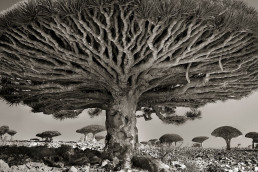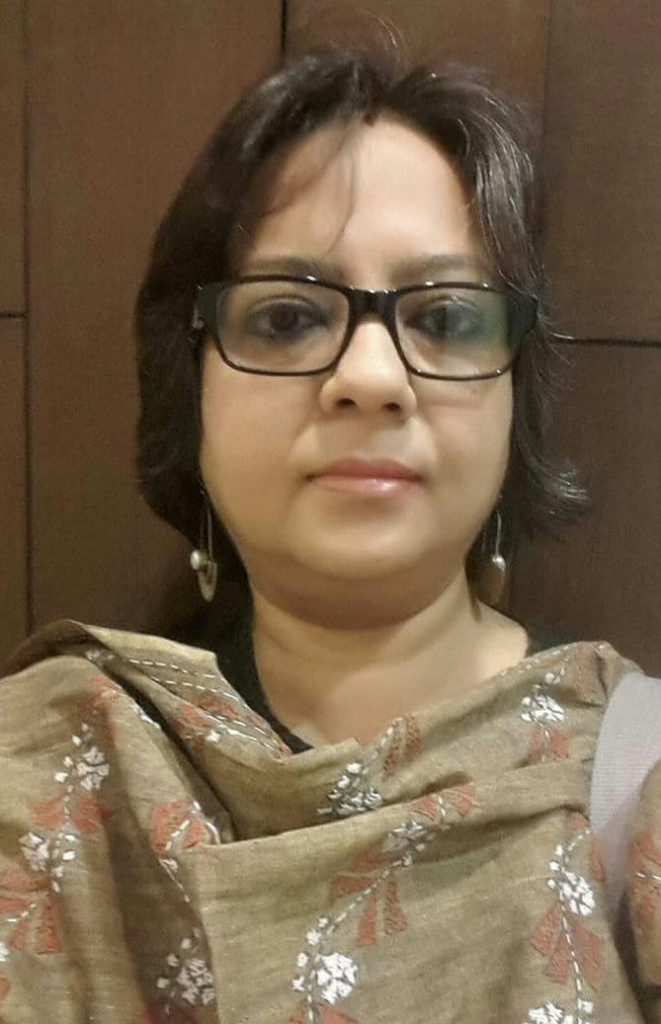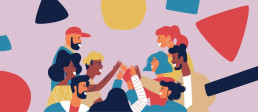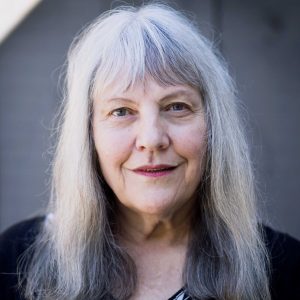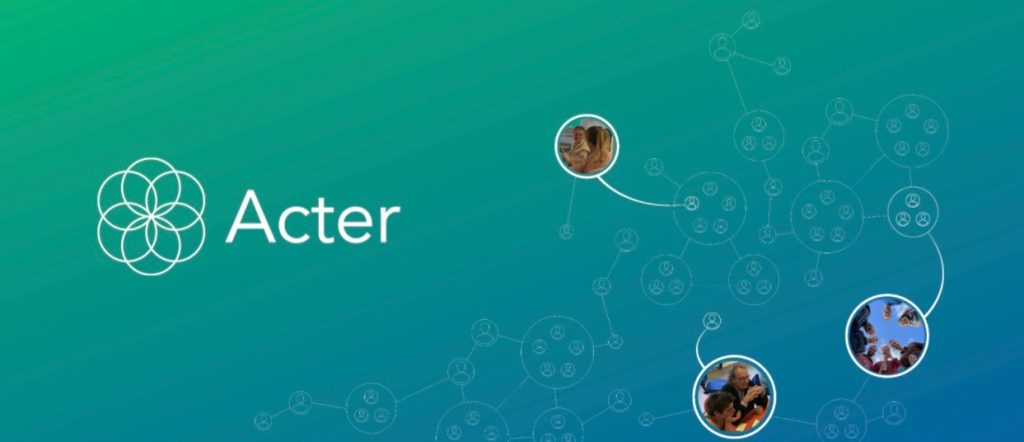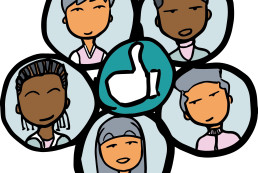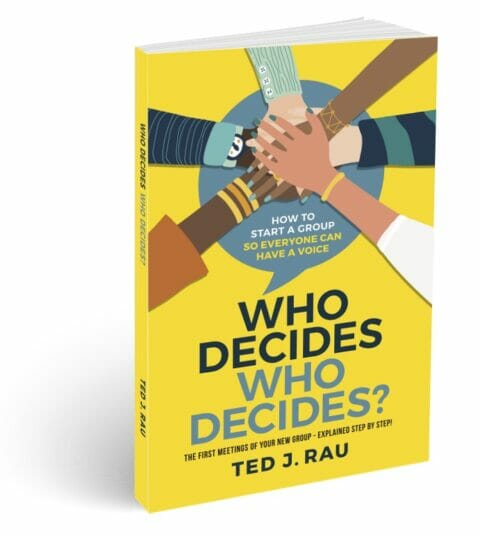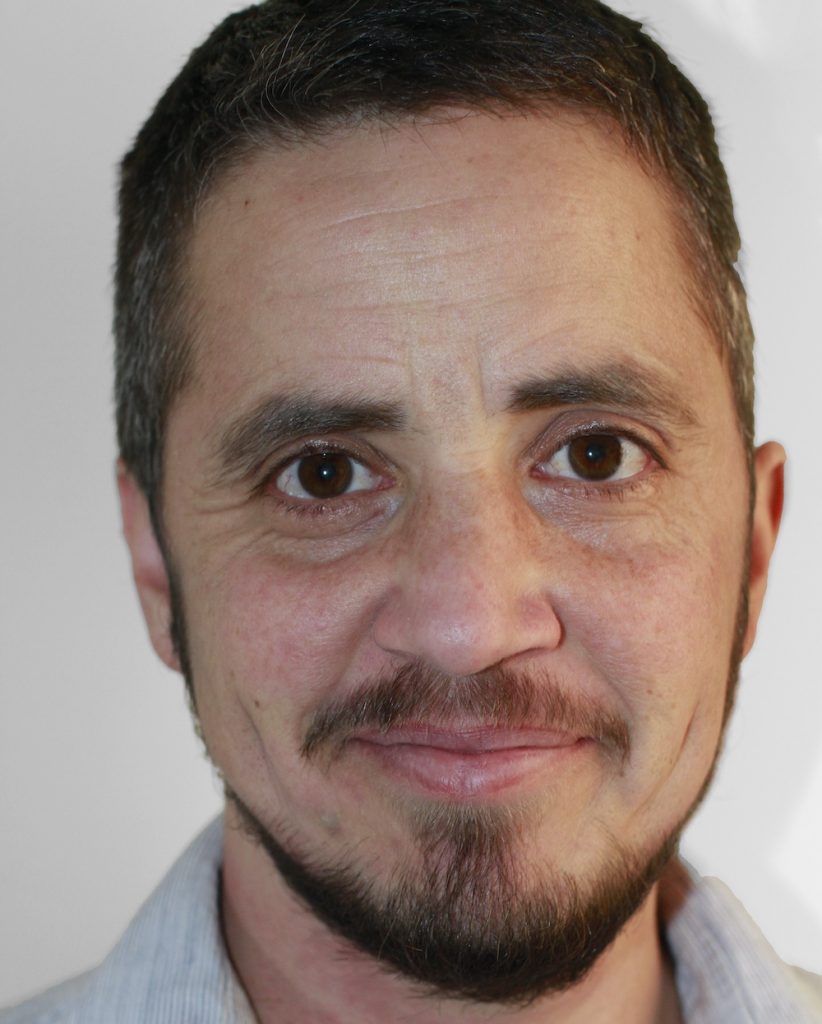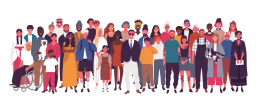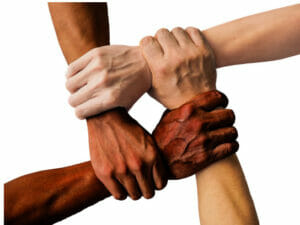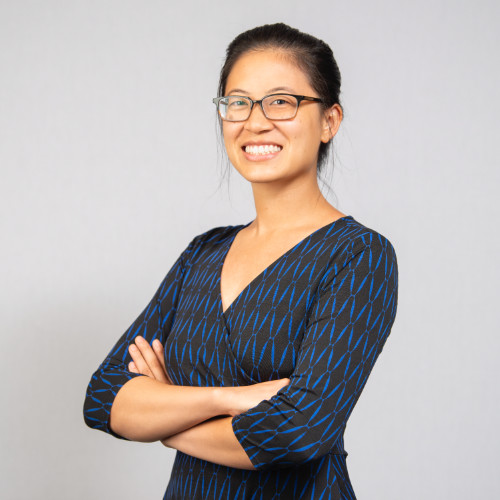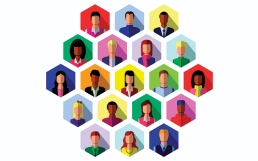Reimagining a Regenerative Future — Part 2
September 14, 2021Blog,equityRegenerative Future,The Big Picture
Scripting new stories, seeking the unseen, unheard, unknown, unacknowledged…
The end of the human race will be that it will eventually die of civilization.
~ Ralph Waldo Emerson
Emerson’s line couldn’t have been truer as we enter the third decade of the 21st century. The world is literally and metaphorically dying from ‘civilization’ and its ramifications. If we dig deeper, we can see that underlying the visible are stories — intangible, invisible, and pervasive; all the more powerful because of that. They are scaffoldings propping up entire civilizations. Hence, the stories we tell and live by have power beyond imagination to shape and direct civilizational trajectories. The stories become compasses encompassing our values, beliefs, norms, structures, policies, and practices. In short, entire worldviews are encapsulated in stories.
Shilo Shiv Suleman’s mural above, evocatively titled Belonging, made me wonder how many of us feel that we really belong to the world we inhabit. It also made me mull over the need for fearless depictions of our almost surreal realities. The creation of beauty is as much an act of defiance as it is an act of aesthetic power. These strange, somewhat disjointed musings led me to wonder how have we arrived at this juncture where we face imminent extinction of most species, acute loss of biodiversity, collapse of the known world, and an ever-yawning divide between the privileged handful and underprivileged billions. This led me to conclude that the stories we are driven by and which form the foundation of our civilization need to be thoroughly scrutinized, deconstructed, and rewoven.
The simultaneous collapse — ecological, economic, socio-political, cultural, and spiritual — of the past few decades culminating in the pandemic is a clear lesson for us to reimagine our foundational narratives. Maybe, it is time to ‘un-civilize’ our stories, time to unshackle them from the credos of an obsolete world order and the delusions of modernity and techno-fantasy. It is time to liberate our stories from the myth of progress, the myth of human centrality, and the myth of our separation from ‘nature.’ These myths are all the more dangerous and insidious because we have forgotten they are myths.
Our current narrative reflects the dominance of Eurocentric, Western worldviews with its accompanying ways of being, seeing, relating, and doing. This worldview — through centuries of imperialism and imposition — has marginalized and delegitimized all other ways of being on and relating with the planet. It has claimed the superiority of universalism by posing as ‘objective truth.’ This de-contextualization and de-placement of the Western narrative has blinded us to its specious origins (Eurocentric, white, male) and have made it a part of the ‘universal unconscious.’ Donna Haraway called it the ‘god trick.’
Only as we collectively grapple with the collapse of the ‘normal’ as we knew it in the wake of the pandemic, does the underlying narratives become visible. The veil of illusion is ripped off, and the papered-over brokenness beneath stands revealed. Once seen, it cannot be ignored as innocuous. Its edifices — feeding on inequality and power, commodification of nature, atomization of individuals, and polarization of the human species — have created a vastly unequal world in an abundant planet, leaving scarcity, poverty, and desperation in its wake — culminating in ecological disasters, existential crises, and misery for the most vulnerable millions. It is, therefore, time to untangle ourselves from the chains and tenets of neoliberalism, neo-colonialism, and capitalism that are still running the show. It is time to hospice the imposed universalization of an essentially narrow worldview ‘controlling’ a world that is unfathomably myriad, diverse, complex, interconnected, and alive: a wonderfully pluriversal planet.
After a quarter century of complacency, in which we were invited to believe in bubbles that would never burst, prices that would never fall, the end of history, the crude repackaging of the triumphalism of Conrad’s Victorian twilight — Hubris has been introduced to Nemesis. Now a familiar human story is being played out. It is the story of an empire corroding from within. It is the story of a people who believed, for a long time, that their actions did not have consequences. It is the story of how that people will cope with the crumbling of their own myth. It is our story.
~The Dark Mountain Manifesto
‘Un-civilizing’ Our stories
How do we step into and embody an essentially pluriversal planet in reimagining a regenerative future?
How do we co-create the new narratives honoring our myriad ways of being, seeing, sensing, and learning?
How do we liberate ourselves form the ‘dangers of a single story?’
The hubris of a single cosmology and its accompanying expressions of modernity — infinite growth on a finite planet, technocracy fast approaching techno-fantasy (techno-lunacy?), relegation of half the globe to obscurity and invisibility (acknowledging that global south exists everywhere), and profound separation from ‘nature’ — has brought our civilization to the edge of annihilation. The even greater conceit is, of course, the confidence in human capacity to control and coerce the universe to human whims. And this is only made possible by the seeming ordinariness and triviality of daily life where much stays the same from day to day, where the improbable seems far away. This disguises the fragility that lies just beneath the placid surface, torn apart with ease by a tornado, a wildfire, or a pandemic.
“Human civilization is an intensely fragile construction. It is built on little more than belief: belief in the rightness of its values; belief in the strength of its system of law and order; belief in its currency; above all, perhaps, belief in its future.” ~The Dark Mountain Manifesto
Now, the familiar story of a civilization corroding from within is playing out — a story of humanity’s Faustian bargain with the Universe, and its consequences. As we linger in this liminal space between stories where one world is dying and the other is yet to be born, we must slow down. “The crisis consists precisely in the fact that the old is dying but the new cannot be born; in this interregnum a great variety of morbid symptoms appear,” wrote Antonio Gramsci. The rise of ‘morbid symptoms’ are evident in the rise of authoritarianism, state surveillance, hyper-nationalism, and all forms of supremacy and oppression around the globe.
To counteract these mighty forces, we must slow down. We must shift from the superficial and outward busyness as a means of escape; we must stay with the trouble, befriend uncertainty, and listen to what the chaos is telling us. We need to move away from the lures of ‘civilization,’ from its known contours, and worn-out pathways. And then act from a place of humility, fierce compassion, and radical tenderness for all of Life. The journey towards a truly regenerative future has no known trails; the paths will be made by walking, being, and embodying our truths as individuals and collectives.
This is precisely what we are witnessing in the dispersed movements of dissent dotting the globe today — from #BlackLivesMatter to #FarmersProtes, from the #MeTooMovement to #FridaysfortheFuture. These are uprisings of ‘ordinary’ people in small, diverse pockets challenging the dominant and major narratives and politics. People going far beyond themselves and risking tyranny, torture, and arrest — students, farmers, activists, artists, writers, lawyers, journalists, housewives, environmentalists, ecologists, scientists, and every other ilk — coming together in defense of the planet, demanding a compassionate healing, demanding greater equality and transparency, demanding legal rights for the environment, and demanding fairer representation, and justice. These inchoate, self-organized, people-led movements are grass roots, pluriversal, and interconnected. Paul Hawken called this “the movement of movements.”
In these hidden voices lie the seeds for a regenerative future, an anti-fragile planet, the beauty of authenticity and wholeness. These voices eschew human supremacy and Western worldviews, reject the tricks and ploys of modernity with its promises of perpetual growth, and disregard ideas of separation from nature. These voices arising from the wilderness are literally ‘Gaia’ speaking on behalf of LIFE, demanding a civilizational story that is life-affirming and soul-nourishing. Humanity has been coerced and lulled into enduring and abiding by rather specious dogmas because other stories haven’t risen yet with a cohesive and binding force.
The rules of our world are laws, and they can be changed. Laws can restrict or they can enable. What matters is what they serve. Imagine a law that starts from first do no harm, that stops this dangerous game and takes us to a place of safety… Polly Higgins, 2015
I believe that the life-force of LIFE is way more powerful than anything humans can envisage. And life will reassert itself. Through us. Through the uprisings of pockets of humanity across the planet coming together in defense of all sentient life. Through the movement of movements. Beneath the apparent destruction lies the humus of rebirth to be composted with radical humility, candor, and fierce compassion. It is telling that ‘humus’ and ‘humility’ both come from the same root meaning ‘on the ground,’ inviting us to reimagine the future from a place of grounded-ness as we co-create narratives towards a regenerative future.
When we zoom out, we can see the overarching commonalities across these disparate and diverse pockets of resistance and dissent spread across continents. These grass roots movements are shifting the civilizational narrative and collective consciousness, hollowing out the dominant one, and crafting a radically distinct one — based not on any single ideology or dogma but values like love for the planet, inclusivity and compassion, equality and justice, on making the invisible visible, and bringing legitimacy to that which the mainstream has disregarded for centuries. However, what is missing is a cohesive and unified thread to hold the nascent and emergent narratives together.
These responsibilities are to be considered in the practices of storying the past, living the present, and weaving new futures. (GTDF)
Underneath the chaos lies an infinite and magical order, waiting for us to re-member, reclaim, and regenerate. The chaos is the Earth’s response to centuries of extraction, exploitation, and extermination of its sentient beings — human and more-than-human in the name of civilization. The typhoons and tornadoes, floods and fires, droughts and decay are her immune system collectively responding to threats. This apparent chaos conceals the beautiful underlying order that pervades all living systems, asking us to pause, sense, and listen; to weave vastly different narratives as we envision a more beautiful world our hearts know is possible.
However, liberating the stories from the dominant ideologies is going to be fraught with obstacles and impediments posed by those in power who will use all machinations of privilege, power, and propaganda to maintain the status quo as they immensely benefit from it. The current narrative cannot exist without extraction, exploitation, expropriation, dispossession, ecocide, and deprivation because it is in denial of five fundamental truths:
Denial of limits. The conceit of the current narrative lies in not accepting the limits of humanity and the planet. By seeking infinite growth on a finite planet, the story has catapulted us into decay and destruction.
Denial of nature. Nature is perceived as inert matter, something ‘out there’ to be plundered at will. Its value lies in being of service to the infinite growth of our civilization. This ultimate denial and separation have culminated in disaster.
Denial of other worldviews. The enforced invisibilization and delegitimization of all ways of being except for the dominant Western one has led to a world in crisis. A single cosmology cannot encompass or make sense of the unfathomable variety of this universe. We live in a pluriversal planet.
Denial of the humanity of all. By refusing to recognize and honor the humanity of all, the story has been effectively ‘weaponized’ to create a world of vast inequality, injustice, polarization, and exploitation.
Denial of our interconnectedness. The story works by insisting that we see ourselves as separate from each other and all sentient beings, by pitting humans against humans, and by denying our entanglement with a living, diverse, complex, and intelligent universe.
All of us are struggling together toward a time when the human spirit can find more room for itself in the societies we create. We are all participating in enlarging the spaces in which we together dwell, so that they might hold more of the greatness of each of us. ~Margaret Wheatley
Activating Exiled Capacities
Beyond ideologies and dogmas, which are really levers of oppression, lie the narratives of humanity — pluriversal, inter-related, contextual, and emergent. This evolutionary shift is already underway. The future exists in the present. The reimagining and envisioning of a different future are happening. Everywhere. In visible and invisible ways. In the fringes and margins. But no longer contained and confined to the peripheries; instead, spilling over into the heart of society, erupting like shoots of hope amidst forces of destruction and decay. Forcing us to see and acknowledge the unseen, unheard, untold, and unrecognized narratives that contradict the constructed reality of mainstream propaganda.
These movements are underscoring another shift — from one where civilizational edifice were constructed by a few (mostly European white men) and founded on Eurocentric worldviews to one where emerging stories are being co-created through grass roots movements, and dialogic, collaborative practices, are emergent, embodied, deeply contextual, and yet, profoundly global. These nascent narratives surpass the barriers of separation and integrates a fundamentally different worldview — one that is not confined by the particulars of place and time, and yet holds context as foundational to its emergence. It is both a synthesizing and decentralizing force — holding space for diversities within the whole. And thus, aligns perfectly with the principles of living systems.
Do we believe we are participating in a world that knows how to organize itself?
Do we believe that qualities of commitment, compassion, generosity, and creativity exist in everyone and can be evoked?
Can we embrace, what Keats described as ‘Negative Capability?’
It happens when we honor and welcome myriad different ways of being, seeing, sensing, and learning — those ways that have been for too long relegated to the peripheries of civilization, those ways that have been superseded by the enforcement of a homogenized way of perceiving and being in the world. It happens when those who can no longer abide by the current narrative come together to co-create and reimagine new stories. It happens when those stories consigned to the margins for centuries are pulled into the center, crashing through our defenses and willful blindness, their wisdom integrating and interweaving to form the tapestry of new narratives. It happens when we find the courage to go just beyond ourselves, befriend our emerging selves, let go off what no longer serves, and make life-affirming choices.
What needs to be done is to make these core characteristics of the new narratives visible, tangible, and widespread. We have to traverse “beyond ourselves,” as David Whyte poignantly said, to go where we must.
Just beyond
yourself.
It’s where
you need
to be.
Half a step
into
self-forgetting
and the rest
restored
by what
you’ll meet.
There is a road
always beckoning.
~David Whyte, Just Beyond Yourself
Article originally published here in The Age of Emergence
You can read the first part of the article here: Reimagining a Regenerative Future - Part 1
Sahana Chattopadhyay — speaker, writer, facilitator, and story-seeker. A scribe to an emerging era, trying to make sense from chaos and collapse, holding space for fearless dialogues, and catalyzing transformation towards a pluriversal planet. For more of her work: https://linktr.ee/sahana2802
PLEASE DONATE to help Network Weaver continue in it’s mission to offer free support and resources to networks worldwide.
Reimagining a Regenerative Future — Part 1
September 13, 2021The Big Picture,Network Mindset,Transformation,BlogSystems Change,Regenerative Future,Radical uncertainty,Network Weaving
Navigating radical uncertainty with radical tenderness…

MATURITY is the ability to live fully and equally in multiple contexts; most especially, the ability, despite our grief and losses, to courageously inhabit the past, the present and the future all at once. The wisdom that comes from maturity is recognized through a disciplined refusal to choose between or isolate three powerful dynamics that form human identity: what has happened, what is happening now and what is about to occur.
~Anais Nin (quoted in brainpickings; italics mine)
Never has there been the need to inhabit multiple contexts more than now — “to courageously inhabit the past, the present and the future”. The start of 2020 presaged chaos, collapse, and terror. In January, the megafires of Australia. In February, megafloods. In March, a deadly pandemic. No respite! The machineries of the world has collapsed and laid bare their fractures and fissures in the face of Covid-19 highlighting the appalling inequality, failed governments, spurious economic policies, failing and flailing nation-states, the exploitation, extortion, and extraction that runs the economy, the dehumanization of humans, and utter disregard for this fragile and beautiful planet.
2021 began with vaccines, which could and should have brought nations together with humanity prevailing over all surface differences to face a global challenge. Instead this degenerated into “vaccine apartheid” with wealthy nations like the USA and Britain opposing India and South Africa’s bid to waive Covid-19 vaccine patents. Vaccine hoarding is another game being played: “… though rich nations represent just 14% of the world’s population, they have bought up 53% of the most promising vaccines so far.” Rich countries hoarding Covid vaccines, says People’s Vaccine Alliance. What could have been a defining moment of compassion, connection, and care in the civilizational narrative turned into repulsive power play, politics, profiteering, and a show of brute strength and shocking neocolonial racism.
The dual traps of neocolonialism and neoliberal capitalism blinded leaders and nations to the most crucial lesson that the pandemic taught us. The infallible truth of our inextricable interconnectedness and interdependence with all sentient beings and this Planet. We cannot survive, let alone thrive, as long as a vast majority of the planet remains oppressed, disregarded, and disavowed. “All the catastrophes we face now are byproducts of a feeble, decrepit industrial-capitalist economy. All that is what capitalism really is — exploitation of you, me, the planet, life on it, democracy, and the future, by organizations wealthier than countries, with legal superpowers, whose only goal is to maximize profit, at any cost. How are we to cohere, prosper, survive, endure — grow?” ~ Umair Haque. One would have thought that the pandemic must have driven this lesson home when a microscopic zoonotic virus jumped species and ravaged the world. Apparently not!
The pandemic, nonetheless, was a point of discontinuity — a rupture in the seams of the already fraying civilizational narrative of universal and never-ending growth and development, the utopia of technology as savior, and the myth of the West leading the rest of the world on an onward march of progress. There have been many moments of disruption, but none spanned the globe with such a visible and terrifying impact bringing mighty nation-states to their knees and halting the juggernaut of the ostensibly unstoppable machinery of global economy. This rift threw up with blinding clarity the brokenness that lay hidden just beneath the surfaces of society, politics, and other machineries and machinations of civilization. The simultaneous collapse of essential systems across the globe — from healthcare and economics to politics and education — are visible evidence of an obsolescing and degenerating civilizational narrative. The depravity and decadence underlying the world order revealed themselves in all their shame.
2020 became an inflection point in the trajectory of the Anthropocene catapulting us directly into the liminal space of radical uncertainty for which we had no script. A space without stories to anchor us, a space of incongruities and paradoxes, of death and decay — a seemingly yawning chasm of obscurity. We were left grappling to make sense. In this interregnum, the questions we ask are crucial acting as compasses in an essentially map-less territory of radical uncertainty.
What if we could navigate radical uncertainty with fierce compassion and radical tenderness — for ourselves, for each other, for all sentient beings, for this beautiful, fragile Planet?
What would those choices and decisions made from a place of fierce compassion look like?
How would we envision our collective future from a place of radical tenderness?
In a 2015 Manifesto called Radical Tenderness, Dani d’Emilia and Daniel B. Chávez writes: “radical tenderness is to not collapse in the face of our contradictions… is to have peripheral vision; to believe in what cannot be seen.” The words are hauntingly evocative, prophetic, and profound. The chaos and conflicts threatening us daily are overwhelming, and it is easy to sink into despair and a desperate yearning for some semblance of stability and certainty. The pandemic can be a portal towards a regenerative future inviting us to hospice what no longer works, and to midwife the new. If only we can “believe in what cannot be seen”.
How can we collectively hold space for the new shoots to emerge from the debris and decay of this collapsing world?
How can we be stewards of those narratives that have been disowned and denied for centuries — those unheard, unseen, unacknowledged ways of being, seeing, sensing, and knowing which can be our salvation towards a regenerative future?
We know in our guts that there is no going back to the “old normal” if we want to survive as a species on this Planet we call home. We can also feel the quiet, ephemeral presence of the more beautiful world our hearts know is possible. “Another world is not only possible, she is on her way. On a quiet day, I can hear her breathing,” wrote Arundhati Roy.
The hegemonic narrative of growth, development, and modernity imposed through the imperial project of colonization — Eurocentric and Western — has not only been running the show for centuries but has sterilized and homogenized all other ways of being and relating on this planet. Donna Haraway called it “playing the god trick”. Now this “god trick” has spectacularly failed as it must. The ineffectuality of this monocultural worldview in a diverse and pluricultural planet is starkly visible.
By excluding, delegitimizing, and disavowing myriad ways of being, seeing, learning, and knowing that did not subscribe or partake in the mainstream, hegemonic, civilizational narrative, we failed to make sense of an inconceivably diverse world. The arrogance of this primarily Western cosmology and ontology being the only meaning-making device available to humanity is astounding in its presumption.
The pandemic is clearly an inflection point. The breakdown of the old order and its edifices are asking us to slow down, to connect with our inner wisdom, to lean into this liminal space of uncertainty and ambiguity, to widen our peripheral vision, and listen to Earth’s invitation to co-create a thriving, flourishing Planet — “a world where many worlds fit”. And maybe, just maybe — we will catch a glimpse of the shoots of the possible futures amidst the debris and decay of the dying.
Let us slow down and listen to the unheard, unnoticed, unappreciated voices and narratives signaling to us from the peripheries, from the edges of “civilization”. Voices and stories that have for centuries been marginalized, demonized, invisibilized — the oppressed, brutalized, and systematically persecuted voices of the human and the more-than-human. The sidelining was part of the project of colonization resulting in immeasurable loss, disconnection, and untethering for millions in the Global South. Global South is not a geographical location but a metaphorical identity that enfolds the unseen and the unheard, the disowned and the disavowed, the delegitimized, invisibilized, and demonized billions. Global South exists in the peripheries and margins everywhere. We become aware of them in movements like #BlackLivesMatter, #IndiaFarmersProtest, and many other local movements of dissidence and resistance that fly under the radar, are never reported, often brutally quelled — in short, effectively and methodically made invisible.
Why is it crucial to integrate the unheard, unseen, unfamiliar narratives into the new civilizational narrative of a regenerative future?
What is the essence of a world that contains multitudes of narratives — a world where many worlds fit?
How do we reimagine a regenerative future — a world where many worlds fit?
What are the founding principles and values of a Pluriverse?
When we acknowledge with humility that we can never know it all — that our knowledge will always be situated, contextual, and partial stemming from the land and its culture can we step into the emergent space of radical uncertainty with hope and humility. What we can do is listen with fierce compassion and co-create containers for fearless dialogues of possibilities.
Dialogues offer us opportunities to intertwine and interweave the myriad ways of being, seeing, and knowing. And dialogues also save us from the dangers of a single story. Dialogues offer us spaces for co-sensing and listening to each other.
~TEDx, The Story of the Global South
In the next part of the post, I explore the concepts of Pluriverse, and why is this necessary to shift the civilizational meta-narrative to one that is inclusive, compassionate, pluri-cultural, and regenerative. None of us have the answer, but we can collectively re-imagine a regenerative future by coming together in fearless dialogues — dialogues revolving around our hurts, our hopes, and our healings.
Article originally published here in The Age of Emergence
Sahana Chattopadhyay —Sahana Chattopadhyay is a global Speaker, Writer, Master Facilitator, Organization Development Consultant, and Coach. She works at the intersection of Complexity, Human Potential, Organizational Transformation, Systems Thinking, and Emergence. Her passion is to enable organizations to develop the capacities, skills, and mindsets to become “thrivable” in the face of uncertainty and ambiguityr, writer, facilitator, and story-seeker. (https://linktr.ee/sahana2802)
I am a part of the Possible Futures collective. I deeply acknowledge the many fearless dialogues here that have helped me shape my thoughts and birthed new ones.

PLEASE DONATE to help Network Weaver continue in it’s mission to offer free support and resources to networks worldwide.
From Learning to Doing
September 8, 2021Network Mindset,Network Processes,BlogWeaving,Collaboration,Communication,SelfOrganizing
How do more of us help create a world that is good for all of us? Many of us have been attending at least a few of the hundreds of enticing webinars that have been available during the last pandemic year, but somehow have not been able to actually apply what we have learned in our communities.
The first challenge has been that most of these webinars are what I call “talking heads:” one individual or a panel of experts share new ideas with us for the entire session. At the end we may realize that we have a million questions and have no idea how we might proceed. But we immediately move back into our workflow and the memory of the webinar content quickly fades.
I’ve even been part of sessions that are more interactive, where we are put into breakout rooms after the presentation and have a chance to reflect on the information provided. But somehow this, too, is not quite enough.
As a result, I thought about times when I , or people I knew, had actually managed to apply a new idea to their community. The very crude chart (would love some graphics assistance on this!) below shows that there are many small steps that need to be taken (and supported by capacity builders) for learning to move to doing.
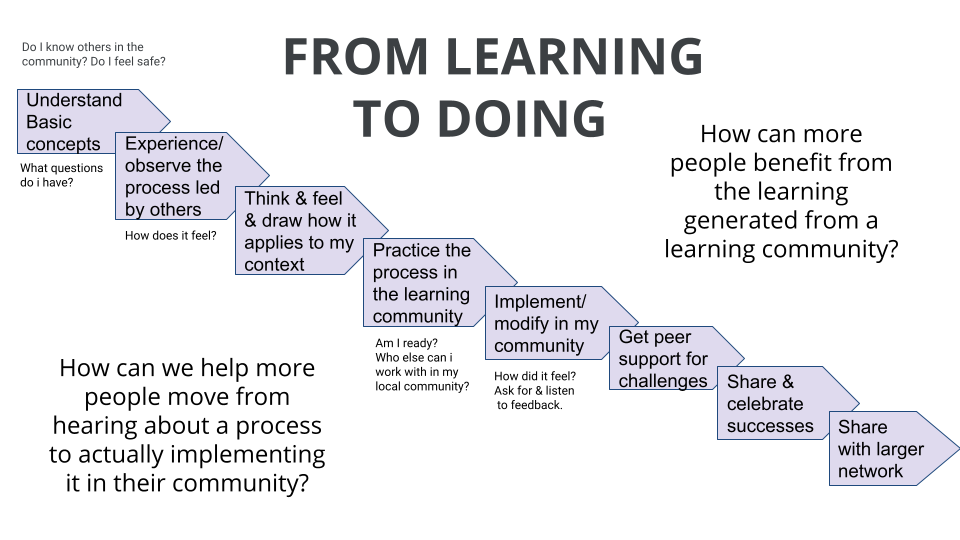
Let’s go through the steps:
Create a learning community.
First, I think learning communities are the best place to be introduced to new ideas. A learning community is simply a group of people (using zoom such groups could actually be very large if good use is made of breakout rooms) who commit to meeting regularly (usually monthly) to support each other’s learning and doing. It’s wonderful if you can have skilled, paid facilitation of such a group but they work amazingly well with informal groups who share the facilitation role. Most learning communities have some sort of focus to their learning, i.e. they may be people who want to learn more about systems strategies or network weaving or food access.
An important part of successful learning communities is that people in them feel safe to share their concerns or challenges. This means that learning community facilitators will need to include relationship building activities in every session where people get to know each other more deeply.
Hear information about a new process, skill or strategy and have space to ask questions and reflect.
I have found that listening to something new is often overwhelming, so I recommend that presenters limit their talk to 10-15 increments. If the topic is complex, you might want to have two 10 minute presentations each followed by a breakout session of 5 minutes. People can generate questions during the breakouts that are captured on a jamboard or Miro board - and answered by the presenter(s) as they are written.
Do a demonstration.
It’s often very useful for presenters to demonstrate the new skill or process with an individual or small group, with the rest of the participants observing.
Practice in the learning community.
The next step is to actually practice the process in the learning community, or in some cases, you may want to set up a smaller popup session for practice.
Thinking/feeling about application.
It’s often useful, especially for introverts, to have some time by themselves processing their reaction to the process. Participants can be encouraged to notice how the process feels to them? Might it be a good fit with their community? Does the process seem hard or simple/ is it scary to think about doing something like this in their community? They can write notes or be encouraged to draw.
You might also give participants time to discuss potential application in a breakout room. Here they might answer questions such as, “How might this work in my community? Who else could work with me on implementing this process? Could I try it first with a small group of people? What is a meeting coming up where I could try this?
Participants then (if they plan to go ahead) make a commitment to try out the process or skill in the coming month.
Applying in your community.
Participants hopefully have worksheets etc to help them take the information back to their community. They also need to be encouraged to find one or two others to work with them on the application. An important part of their planning process needs to be thinking about how the process may need to be modified for their specific context.
An essential part of any process will be to allocate time for the groups’ reflection on the process.
Other worksheets can encourage the facilitation group to spend time after to reflect on the process: what worked well? What would we need to change? What challenges did we encounter that we didn’t expect?
Get peer support for challenges.
When the learning group next meets, ask if anyone experienced any challenges in applying the practice. If there are several, you might want to have each person with a challenge go into a breakout room with others to support them. Then share the peer assist process to help them think how to work with the challenge.
As facilitator, you will need to frame the request for challenges with the importance of seeing challenges as a way to deeper learning. This embracing of so called mistakes is a key part of the mindset shift we all need to make.
Celebrate successes and harvest to share with other networks.
Encourage one or two participants to share successes they had with the process - encourage them to share pictures to make their success come alive for others.
You may want to facilitate a knowledge harvesting process. Some people have had success using jamboard, Miro or a google doc where everyone can add what they learned from implementing the process, suggestions for changes or improvements, key factors for success and so forth. Encourage one or two participants to take this input and craft into a post or handout that can be shared by participants with all their networks and social media connections. They may want to include video snippets of the process or people sharing how useful it was.
Share with other networks.
If the learning community is part of a specific network with a communications ecosystem, encourage the information to be shared through newsletters and social media. You might also want to turn the information into a resource or handout, as we are doing with this blog post!
If there is a good response to the sharing of the information, you might want to set up a popup for others outside of the learning community on how to use the process in their settings.
Big Picture
What is this chart suggesting about training? It’s saying that if we want our training to lead to change in communities, we need to reconceptualize training to make it more interactive and supportive of all the steps that are needed to move from learning to doing. We will get so much more impact if we shift the emphasis from content (and this is very hard because we as teachers, presenters and experts almost always LOVE our content and feel people need to have access to every bit of it! You can still share a longer video or article with participants so they can dig in deeper) to an emphasis on support for application of new practices.
Next steps
I would love for people to comment on this article, add additional ideas, edit it - in other words, make it better! Please just click on this link and it will take you to a google doc where you can comment or edit. This blog post can be so much better with your thoughts added. Once we have collected and edited those new thoughts, I’ll revise this blog post.
I’d also love to hear how you share this post with others in your networks. Was it useful? Did you take any steps to shift your webinars so they are more interactive?
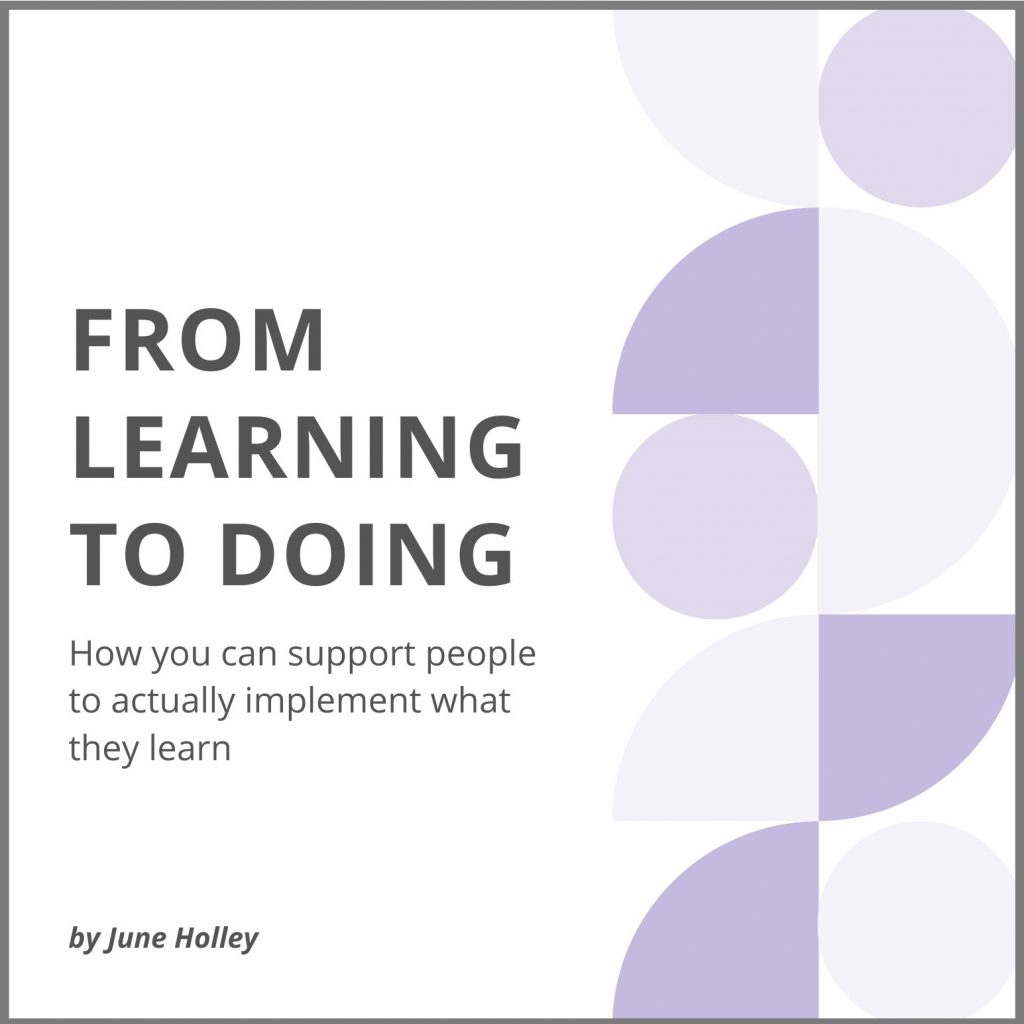
June Holley has been weaving networks, helping others weave networks and writing about networks for over 40 years. She is currently increasing her capacity to capture learning and innovations from the field and sharing what she discovers through blog posts, occasional virtual sessions and a forthcoming book.
featured image found here
PLEASE DONATE to help Network Weaver continue in it’s mission to offer free support and resources to networks worldwide.
A Poetic Ecology of Networks: Moving From “It” and “So That” to “Us” and “As”
August 31, 2021The Big Picture,Blog
Networks are fundamental to life, to liveliness and to livelihood. There is growing recognition of this fact. And at the same time, the frame through which one views networks has a lot to say about how one might be living out and into their potential, or not. For example, I still see people a bit enamored of “social network analysis” (SNA) in a way that concerns. It is the equivalent of pinning an insect to a board and dissecting it. The vitality of any living creature does not lie in understanding its “parts” alone, and pinning anything down does not allow “the observer” to see it in action, in its vitality. This is not to say that SNA cannot be helpful, but to keep in mind that anything frozen is not a true representation of life, and that the very observation of something changes it, as in living systems we are constantly engaged in the making “and bringing forth of worlds” through our interactions (see the work of the late Humberto Maturana) .
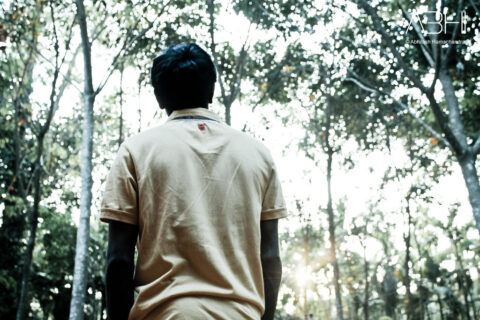
Which brings me to the use of “it” in referring to a network, or the idea of “building a network.” A network is not simply an it, it is an “us,” at least when we are referring to social and social-ecological webs. And a network is not simply a means to an end, a “so that,” if you will. Networks always “are” in some sense, in light of the myriad and often invisible connections that exist in our world. And as I have written before, the very nature of networks in terms of their patterns of connection and flow, has a lot to say about human and ecological health and resilience.
The use of “it,” which I certainly fall into, can create a degree of false and, in some cases, dangerous separation. A case could be made that much of what ails mainstream society and the human world is a severe case of distance and abstraction. As Andreas Weber has pointed out, this false separation in mainstream biological sciences can lead to the cutting off of something vital – our feelings and emotion! In The Biology of Wonder, Weber makes the case that far from being superfluous to the study of organisms (including social and and social-ecological networks), feelings (and I would add our bodies below the neck), are the very foundation of Life!
Which is why, increasingly, I am playing with full-bodied ways of engaging people in “network ways of thinking, doing and being” – at individual (internal to our selves – yes, we are networks!), group, and larger systemic scales. Whether it be poetry, music/song, meditation, storytelling, somatic practice, there is an apparent need to enlist people in a “poetic ecology” (in Weber’s words) of net work. This to me is key to helping to realize the regenerative potential of networks, and requires dedicated and deep practice.
What changes, what possibilities arise, when you shift towards “seeing” a given network as an “us” and an “as”?

originally published at IISC
Curtis Ogden is a Senior Associate at the Interaction Institute for Social Change (IISC). Much of his work entails consulting with multi-stakeholder networks to strengthen and transform food, education, public health, and economic systems at local, state, regional, and national levels. He has worked with networks to launch and evolve through various stages of development.
PLEASE DONATE to help Network Weaver continue in it’s mission to offer free support and resources to networks worldwide.
Organize in Changing the World Together
August 25, 2021Network Support Structures,The Big Picture,Blog
Are you tired of Slack and Facebook? Have a discussion space like Mighty Networks but no one comes? Want to support network weaving or self-organizing, but the tools fail you?
Then join June Holley and Ari Sahagún on September 8th to explore and help co-design Acter, a platform specifically designed for and with networks (and networks of networks) working on social change. During the session you will have a chance to learn basic network weaving strategies that make online spaces come alive. During the coming months you will have several opportunities to co-design new features of Acter, while trying out network weaving practices -- all at no cost to you.
We know that a tool alone won’t be able to get the job done of network weaving - that’s why we’re pairing practice sessions on weaving and self-organizing with a tool built to learn how to support these person-to-person interactions. We want to enable more and better relationships within networks - for collaboration, sharing thought partnership, and just getting to know each other.
We want to invite you to learn about online network weaving while co-creating a useful space for exactly that. On September 8 (8 am pst, 12 pm eastern, 6 pm cet) we’re offering a one hour interactive exploration of the platform where you can complete a profile, connect to others with similar interests and set up a group space around a topic you’re interested in.
You will get a chance to meet and work with June Holley, network weaver, and Ari Sahagún, movement network ecologist as well as Emil Vincentz and Janne Winther from Acter.
Please sign up for the event through calendly HERE.
Acter can help you find others interested in some of the same things you care about, then easily set up a group space where you can invite others to join. In the next two months, we will be asking you to co-design these learning and work spaces so they meet your network’s needs. We will also be inviting you to help Acter develop an expanded list of ”hot topics” so you can better find other people through maps showing connections among people interested in that topic.
“At long last, a platform designed just for networks and networks of networks! I have been working with the talented acter.global team now for months and I am impressed.”
June Holley
If you want to know more about Acter you can watch our short introduction video below:
A slide show with even more detail is HERE.
We are a tech startup based in Aarhus, Denmark. We are working for purpose and impact, not profit. Any profit we make we reinvest in accordance with the four Cs - company, co-workers, customers, and community. We have a diverse team of people, some are entrepreneurs, researchers, chaos pilots, software engineers, students, artists, activists. We are a relatively young team working to make digital tools assets in creating a regenerative world.
Acter is already working with ReGeneration 2030, DANUBE Youth Network, United Nations Youth Association, Aarhus Municipality among others.
In addition to co-designers, Acter is looking for partners/funders, who are willing to help underwrite the cost of continued development.
Also, if you might be interested in developing a customized site for your grantees or networks, please contact Emil Vincentz at emil@acter.global.
Comparison Chart
| Features | Mighty Networks | Slack | Acter.global |
|---|---|---|---|
| Platform participants are involved in co-designing the site | No | No | Yes |
| People’s profiles help them find others interested in learning or working on a similar topic | Profiles not flexible or useful | No useful profile system | Profiles already have focus, approach and hashtags as part of profiles *Working on more (and you can help co-design) detailed profiling around mutual exchange of skill building, hot topics, etc |
| Profiles are used to create network maps | No | No | In development: working on instant network maps (both geographic and interest clusters identified by profiles, maybe emerging themes in the future) |
| Support for collaborative projects | Minimal | Confusing | Easy to move from cluster to workspace for projects; workspace will soon have links to google docs, zoom, library |
| People can join as part of an organization and part of multiple networks as well as individual | Doesn’t have this capacity | Does not have | Currently being developed |
| Network Weaving training and practice groups are integrated into the site | No | No | Currently being developed; will be available to the Intro Group |
| Create and share activities across multiple groups and networks | No | No | Currently being developed |
| Connect across multiple groups, organisations and networks | No | No | Currently being developed |
| Provide all participants with a set of metrics about the site | Only admin | No | Currently being developed |
Please sign up for the event through calendly HERE.
PLEASE DONATE to help Network Weaver continue in it’s mission to offer free support and resources to networks worldwide.
Who Decides Who Decides?
August 16, 2021Self-Organizing,Blog,TransformationSociocracy,Governance
Have you ever started a group that started with enthusiasm and fizzled out over time? I have. Even more often, I have joined groups that other people started… that fizzled out over time.
So, what happened? If your experiences are similar to mine, here are some typical stories.
- Groups start out with a vague understanding of what we’d do together and then we don’t do things because first we talk… and talk about what we would do if we ever actually started. Needless to say, we don’t start but fade away.
- Someone starts doing things. Somehow the doers take over and there’s no room to plug in. We’re all grateful but there’s also no room to talk about whether what they’re doing fits with the rest.
Self-organization is powerful because it has the potential to align a lot of people and their passion with each other. Yet, self-organization doesn’t mean having “no rules”.
The invisible force that makes or breaks a new group is governance. Governance doesn’t sound exciting, and it reminds everyone of boring board room meetings. Yet, the truth is that governance is everywhere - every group that makes decisions gets to those decisions somehow - whether we like that way of making decisions or not.
So how can we introduce just enough clarity and process to make governance inclusive, easy and unleash the power of self-organization? There’s a new book that describes exactly that. It uses the tools from sociocracy - a consent-based, heavily participatory, and co-creative decentralized governance system - and lays out how to start a group and put decision-making and a good distribution of responsibility and actions into place step by step. The book has printable meeting templates of the first 3 meetings that will support your new group and launch it well!
- In the first meeting, a group establishes how they operate and what they do. They celebrate being a group and spend time getting to know each other.
- In meeting #2, a little bit of structure is established so everyone knows how to contribute, and the group can plan for the future in an accountable way.
- Meeting #3 is all about getting started and reviewing what we’ve done so far - only if we review our processes can we make sure everyone’s needs are considered and we are intentional about how we spend our time.
The process works the best for groups of 3-12 people who are actively involved. It can be used to start or to re-kindle a group.
The book comes with a resource page of printables, demo videos and an interactive forum.
Ted Rau is a trainer, consultant and co-founder of the non-profit movement support organization Sociocracy For All.
He grew up in suburban Germany and studied linguistics, literature and history in Tübingen before earning his PhD in linguistics there in 2010. As part of that career, he moved to the USA and fulfilled a long-held wish to live in an intentional community. Since a career in Academia required more moving around than he was willing to do, he left Academia. Ted identifies as a transgender man, and he is a parent of 5 children. He lives with 70 neighbors in Massachusetts in an intentional community. Link to more info on sociocracy
PLEASE DONATE to help Network Weaver continue in it’s mission to offer free support and resources to networks worldwide.
Organizing Liberatory Networks: An Invitation
August 10, 2021Transformation,Blog,Systems,Transformation,equity,Systems ChangeLiberatory Structures,Self Organizing,Liberatory Networks
These are emerging reflections on the work we have done within networks, which includes networks for and led by people of color, multi-racial networks, queer networks, immigrant networks, and other groups that have come together to shift systems towards equity and liberation. In particular, we want to name the leadership of Black and Indigenous women and femmes within these networks who contribute wisdom and emotional labor to support the work of these groups. We are also grateful for the wisdom shared by The Queen Sages, Child Care for Every Family, Protecting Immigrant Families, All Above All, Transformative Leadership for Change, Center for Innovation in Worker Organization and their Women Innovating Labor Leadership Program, and all the participants of the movement network organizer pilot.
The events of the last year, continuing to this year, have called on us to deepen practices that center intersectionality, solidarity, racial justice, and mutual aid. Organizers have been working one-on-one with people in communities and side-by-side with other organizations to support people’s immediate needs and build movements for love, dignity, and justice. Along the way, organizers have deepened their praxis on transformational organizing and working in networked ways. (We think of praxis as having a stance of discovery and learning as we experiment with and embody aligning our values, beliefs, and worldviews with our practices, mindsets, and ways of being.)
This blog shares what we are learning from organizers and grassroots groups about organizing with and in networks. These insights are constantly evolving and changing so we invite organizers, networks, capacity builders, and those who fund this work to learn, practice, and deepen our learning together on how to catalyze and shape liberatory networks. We are in a moment of possibility where we can hold the learnings from the last year(s) and continue to build, nourish, and sustain networks that disrupt conditions in the sector to advance love, dignity, and justice.
What Are Liberatory Networks?
Over the last decade, we’ve learned a lot about how to nurture and sustain powerful, equitable networks (by network we mean collective efforts that seek to align people across constituencies, geographies, issues, or movements to accomplish something no individual entity could do alone). Allen Kwabena Frimpong at AdAstra Collective has introduced us to different types of networks such as the decentralized, self-organized network with many overlapping clusters and a strong periphery. Folks like Deepa Iyer and June Holley have helped us to understand the roles individuals play within networks and movements, such as “the guardian” who creates the conditions for the network to thrive, or “the healer” who mends harm within it. Finally, organizers have helped us understand the essential capacities networks need to be sustainable and advance equity, such as weaving relationships that center equity and trust or managing polarities, conflict, and the distribution of power and resources.
As working in networked ways becomes the norm, we are seeing professionalization, technocratization, and the loss of the relational soul of many of our networks. Thus, we want to elevate what we are learning from folks of color and queer folks who have been catalyzing, co-creating, and evolving networks that embody transformation at the personal, organizational, and network levels. These networks are interdependent, relational, evolving ecosystems where we can be our whole selves, be mutually supportive and accountable, and co-create new futures—where both what we are doing together and how we are doing it are important and integral. In order to distinguish the work of these groups from conventional networks, we refer to them as “liberatory networks.”
Liberatory networks create space for long-term visioning, self-awareness, naming and addressing the oppression that is replicated in our strategies, and the healing of personal suffering. They support individuals to ground in their ancestral and spiritual roots. They have mechanisms to hold people through traumas, triggers, harm, and internalized oppression in ways that restore relationships and connection. Member organizations are actively doing anti-racism/oppression work internally to show up in solidarity with others and in accountability with community, staff, and board.
These powerful networks are disrupting what we have been taught, and now assume, about what strong leadership and operations should look like in the nonprofit sector. Many networks and organizations are moving from solo charismatic leaders to shared leadership, from “power over” to co-powering, from top-down knowing to collective meaning-making, from defaulting to habits of white supremacy culture to practices centering BIPOC leaders and advancing the collective liberation of all people. Through these practices, liberatory networks, in turn, enable us to advance equitable systems change and shift culture overall.
Invitation to Intentional Praxis
As Stacey Abrams points out, now is the time to build the infrastructure we need to have the power to bring forth our most radical imaginations for a new society. This infrastructure will be and already is networked with clusters of organizations and individuals that are interconnected. One organization or short-term coalition cannot meet growing community needs or support healing from trauma; cannot absorb, sustain, or deepen the engagement of millions of people who want to participate; and often cannot transform society. Liberatory networks allow us to build, aggregate, and wield more power. They can provide a space to reconnect and heal from racialized harm, isolation, burnout, competition, fragmentation, and campaign-to-campaign exhaustion. They can enable us to collectively deepen our praxis towards liberation.
Organizers are important bridgers both across and within liberatory networks. When organizers have space to work with community and network members, they can co-create liberated, powerful, and creative spaces that inform and shape liberatory networks. When included in developing bold visions and strategies at the network level, organizers bring these ideas into relationships and action on the ground.
Organizers are already drawing connections within their work and learning about and co-creating liberatory networks through their own experimentation. At the same time, organizers and other network members, such as capacity builders, facilitators, and funders, could be stronger partners and architects in building and nurturing the infrastructure we need for a liberated future if there were more spaces for intentional praxis and broader sharing of these learnings across – in addition to within – networks.
What We Are Learning About Organizing Liberatory Networks
The following are praxis seeds for organizing in networked ways to advance liberation. We draw on stories shared through two pilot classes co-authors Susan, Trish, and Robin did with 29 organizers, a convening we did with grassroots leaders and funders, and our own experiences partnering with organizing groups and networks. We invite you to contribute your own insights as well so that we can continue a dialogue about organizing liberated networks. What is your praxis? How can we continue to evolve our practices to get closer to our aspirations of liberation and racial justice?
1. Centering racial equity and healing, particularly addressing and repairing inequitable distribution of power, resources, and labor
When working in and across networks, organizers are being thoughtful and transparent about how to marshall resources, recognition, and capacity equitably given current and historic racism and intersecting oppressions. Organizers spoke to three ways that they are doing this. First, several organizers shared how they use somatic practices and storytelling to support BIPOC members to develop a racial analysis, connect to ancestral wisdom, and embody what it means to center themselves. As one example, an organizer described this somatic stance: “I have my hands out; I’m open. I have one foot forward and one foot back; as a male Latino, I’m listening to women and courageously taking space against patriarchy.” Second, when individuals are grounded in their whole selves, organizers can facilitate conversations about the differences among groups. One person, for instance, shared how white and BIPOC caucuses helped develop radical relationships across racial groups. Lastly, organizers in networks are addressing inequitable distributions of labor, resources, credit, and compensation. Women of color and Black women and femmes, in particular, often hold emotional labor and relational work in networks. Participants at the NEST1 convening discussed ways to shift this dynamic by compensating women for this invisible labor, sharing or shifting responsibilities to white men, and prioritizing regional tables that center leaders of color.
Opportunities for Praxis Exploration
- Centering people of color, blackness, and indigenous peoples while de-centering whiteness
- Building a foundation of trust to recognize power differences and have courageous conversations
- Embodying love, human dignity, and compassion
- Unpacking levels of oppression while recognizing the historic social construction of racism
- Moving from oppression to liberation by reconnecting to source, story, body, and emotions (thanks to Monica Dennis for this framework)
- Attending to who does the emotional labor and how we share that or rectify it
- Managing the tensions between addressing immediate needs of communities of color and laying long-term foundations for transformation
- Reflecting on where our movements have failed to embody our values and consciously co-create the conditions for embodying them moving forward
- Centering reflection, learning, repair and re-creation as a continuous and loving process.
2. Doing the inner work needed for personal and interpersonal transformation, which is critical for nurturing radical relationships and our interdependence
There are two areas of inner work that are top of mind for organizers working in networked ways. The first area is nurturing radical relationships and connections within and across movements. Two of the organizers we work with shared that, when they had the opportunity to develop a shared political analysis and vision with a people of color caucus over the course of a two-day retreat before collaborating with the broader network, it enabled them to nurture trust, recognize shared values, and find ways to honor each person’s and organization’s contribution to the movement. Another organizer shared how they connected two groups that would not normally be allies by asking a powerful question: “What does home mean for you?” This question later led to a storytelling organizing process across multiple organizations, supporting both individual and group transformation.
The second area is embracing generative tensions as a liberatory practice. These tensions are often framed as polarities and include abundance and scarcity, conflict avoidance or expression, centralization or decentralization, focusing nationally or statewide, transparency and information overload, accountability for racialized harm and cancel culture, calling partners into a radical stance or compromising for an interim win, and so many more. Organizers regularly navigate these tensions as their context continuously evolves. This involves reframing disagreement from being divisive to being generative. Navigating tensions can deepen our collective capacity to make meaning of complex issues. It can help groups discern when our desire for resolution is rooted in our discomfort with holding multiple and different ideas (so we could get more comfortable living with conflict) and when this desire is needed to maintain the integrity of the network. Organizers further shared that they use racial healing, restorative justice, conflict resolution, polarity management, forward stance, and many other approaches to name and reconcile tensions and realign and heal networks and relationships.
Opportunities for Praxis Exploration
- Integrating head, heart, and body
- Embracing change and emergence
- Nurturing a whole person and their ways of being
- Creating space for relationship building
- Recognizing difference, naming tensions and polarities, reconciling conflict generatively, and healing harm
- Tending to well-being and sacred grounding
- Supporting self and community care
3. Shifting to more emergent and collective ways of understanding and navigating complex systems change
Organizers regularly engage community and network members to analyze systemic root causes and identify leverage points for transformation. They use a range of practices like storytelling circles and collective vision murals to do so. During the pandemic, organizers became pros at adaptation – moving to digital organizing, virtual policy advocacy, and mutual aid to address emerging community needs. They built in check-ins, yoga, breathwork, meditation, and other practices to support themselves and community members to be resilient. Organizers are always adapting as they seek complex systems change including:
- Tending to both campaigns and the sustainability of people, organizations, and the network overall
- Figuring out when all network members need to be in agreement and when a critical mass of a network can move things forward
- Having ways for parts of a network to opt in or out of democratic processes
- Flexing between decentralized experiments with liberated models and coordinated targeted campaigns
NEST convening participants also shared how networks are themselves systems, and people need well-resourced spaces to disrupt white supremacy, model liberatory ways of being with each other, and translate learnings from successes and failures without judgment.
Opportunities for Praxis Exploration
- Forging interconnectedness and interdependence and breaking silos
- Shifting from scarcity to abundance
- Embracing change and emergence while letting go of certainty and the idea that healthy networks are static
- Developing a complexity mindset, which means assuming disagreement, unpredictability, ambiguity, and emergent patterns
- Listening deeply, holding multiple perspectives (i.e., individual, organization, and network), and generating nuanced alternatives
- Experimenting as a way to take risks, innovate, and learn
4. Sharing leadership and decision-making power in ways that lift up Black and Indigenous peoples and other people who have historically been excluded from power
Sharing leadership is core to transformative organizing in networks. What this means for organizers is supporting community members to recognize and develop their own leadership, and centering Black, Indigenous, and other people of color in leadership (both of which are critical in non-network contexts as well). For instance, women of color organizers Trish Tchume and Aida Cuadrado Bozzo have worked with groups of organizers to navigate complexity and emergence (which are typical for networks), in support of a shared vision, build teams that are intentional about staying in “right relationship,” and call in community members to a liberatory stance.
Sharing leadership and power also means creating transparent feedback loops, opportunities for community members to practice different leadership roles within a network, and spaces to collectively connect to heart, body, and spirit. For instance, one organizer shared how they used salsa dancing to invite people to show up as their full self and see the different roles in a movement (e.g., lead, follower, creating space, etc.). As another example, organizers are engaging community members (who are compensated for their time), to gather community perspectives, stories, and experiences; shape priorities of the network itself; review messaging, materials, and tools that are used with community members; and co-develop actions on shared campaign tactics.
Opportunities for Praxis Exploration
- Recentering BIPOC leadership, particularly as decision-makers and liberated gatekeepers
- Cultivating not one leader but many leaders who can trade-off and play different roles
- Engaging and developing leadership at many points and levels of authority in the system
- Systems and processes for shared meaning making, co-creation, and mutual accountability
- Connect to self as a whole person and developing trusting relationships with others
- Sharing decision-making power, credit, resources, influence, and turf with attention to liberation, equity, and reparations
- Collectively determining how funding will be raised, used, and distributed in the network
5. Creating space to connect to our multiple wisdoms and intelligences (e.g., ancestral, spiritual, natural, creative, somatic, etc.)
Some organizers have long histories of connecting community and network members to multiple wisdoms and intelligences (e.g., theater of the oppressed as a somatic and artistic practice for political education). Other organizers spoke to how challenging it is to shift organizing patterns to make space for spirituality, emotions, artistic and experiential practices, and bodywork. Many organizers strive to hold themselves, partners, and community members as whole people in their full dignity, which means supporting people to develop their innate talents, decolonize, heal, and express themselves in the ways that make sense for themselves. This is critical to transformational organizing and to organizing liberated networks. Trish Tchume and Aida Cuadrado Bozzo, with Viveka Chen, Zuri Tau, Holiday Simmons, and Susan Wilcox, have developed “Calling In & Up: A Leadership Pedagogy for Women of Color Organizers,” which supports organizers in creating liberated spaces that embrace multiple wisdoms. The guide shares a range of spiritual, cultural, and somatic practices to decolonize spaces, create the conditions to live into liberation, and build and deepen relationships.
Opportunities for Praxis Exploration
- Recognizing, lifting up, and engaging wisdom in multiple forms including experiential, ancestral, spiritual, natural, somatic, art and culturally-based forms of expression and meaning-making
- Embracing being a co-learner and co-creator rather than or in addition to being an expert
- Rooting into a values-based frame
- Shifting approaches to organizing that disproportionately value analytical, intellectual, and logical forms of knowing
An Offering for Praxis
This blog shares what we’ve been learning from organizers and grassroots groups about organizing liberatory networks. We invite you to share your learning, insights, and questions so that we can continue a dialogue about organizing liberatory networks together.
How are your networks embodying liberatory network approaches?
Please share your reflections in the comments below!
1The Networks for Equitable Systems Transformation (NEST) convening took place across 2.5 days in 2019. The group consisted of network funders, participants, and intermediaries who shared space and surfaced challenges, opportunities, and questions related to their work in networks. Read more about the design of the NEST convening and key takeaways from participants here.
2Here we are not referring to an organization’s membership base since not all organizations have a membership model although there can be overlap when community members are also members of an organization.
We'd like to thank Panta Rhea for supporting the movement network organizer pilot and our efforts to share this learning with you through this blog.
About the Authors
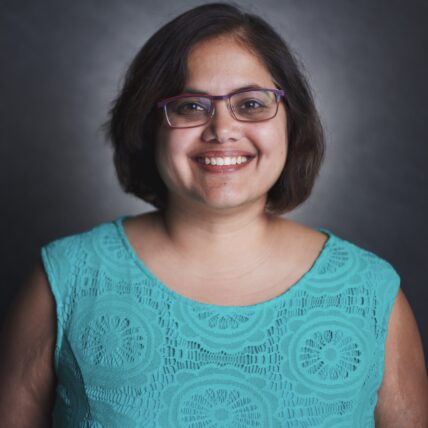
Susan Misra’s life purpose is to work with advocates and activists to actualize their visions and values of justice and equity in their relationships, structures, and work today. She has over 20 years of experience in developing equitable, sustainable organizations and networks for movement building.
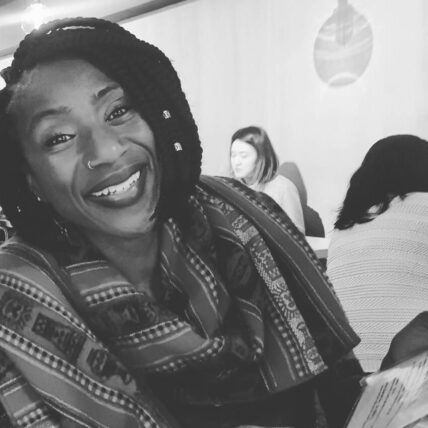
Trish Tchume is the Leadership Program Director for Community Change and comes with almost two decades of experience helping everyday people see their role in the gorgeous project of building a more just and equitable society.
Robin Katcher strengthens organizations, leaders, and networks on the front lines of social change. Her deep experience in social justice movements – as an organizer, educator, legislative advocate, and board member – informs her rigorous approach to building powerful organizations, leaders, and networks.
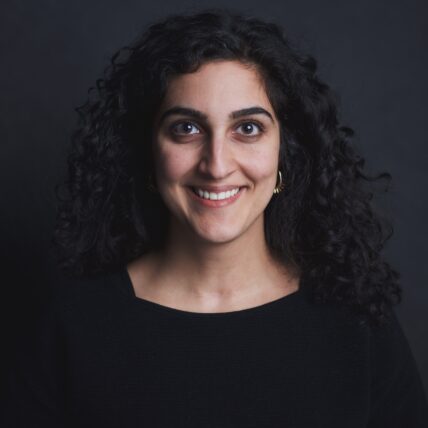
Natalie Bamdad joined Change Elemental in 2017. She supports Change Elemental consulting engagements through research, analysis, and project management. Her core areas of expertise include strategic planning and program design and implementation.
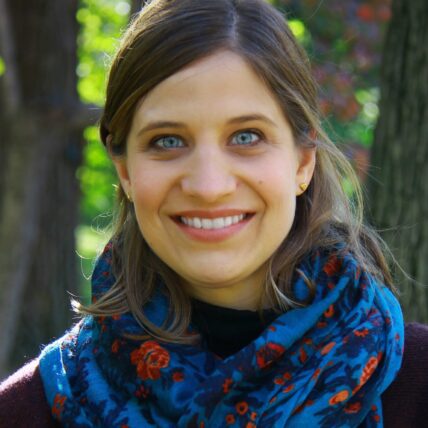
Natasha Winegar is a researcher, writer, communications specialist, and coach. She joined Change Elemental in 2013, and is our Research & Communications Manager. She collaborates on our consulting, coaching, and learning engagements, bringing a blend of curiosity, imagination, strategic insight, and a commitment to love, dignity, and justice.
Originally published at ChangeElemental.Org
Banner Photo Credit: Cuba Gallery | Flickr
by SUSAN MISRA, TRISH TCHUME, ROBIN KATCHER, NATALIE BAMDAD, NATASHA WINEGAR
5 Strategies for Combining Equity with Sociocracy
August 3, 2021The Big Picture,Blog,Transformation
The key promise of sociocracy is that all voices matter. In reality our current sociocracy practices are not enough to overcome the way society systemically oppresses the voices of people from poor, non-white, transgender, disabled, et cetera, backgrounds.
Examples of how this dynamic can show up
- Everyone speaks in rounds at a meeting but participants only acknowledge ideas brought up by men
- An all white human resources circle seeks input from organizational members but deprioritizes a Black member’s request to strengthen the organization’s anti-racist policies
- A school leadership circle makes decisions by consent but the circle doesn’t have any student members
In all these examples, people were using sociocratic practices but were not truly listening to everyone. In other words, they were not governing equitably.
In this article I define equity, make an argument for why combining equity and sociocracy is so powerful, and share five strategies for embedding equity into sociocratic governance.
What is equity?
Equity is both an outcome and a process. The outcome is that all people are equipped to thrive as happy, healthy, and impactful citizens of the world regardless of what class, race, gender, caste, abilities, etc. people have. The process is that those most impacted by inequity lead in setting priorities, deciding where to invest resources, and shaping policies. People who have been most oppressed are the ones who best understand the problems and therefore best understand how to break down systems of oppression for the benefit of everyone’s collective liberation.
Equity is different from equality because equality has often been used to describe giving everyone the same opportunities or the same support, but what is equal is not always fair. A child growing up poor, for example, will need a lot more financial resources from the community than a child who’s growing up rich.
Why combine equity with sociocracy?
When we combine equity with sociocracy, we create a powerful tool for change.
One, combining equity with sociocracy makes it possible to fulfill sociocracy’s promise of all voices matter.
Two, I’ve found that social movements and organizations often struggle because more common governance frameworks such as majority rules or unclear consensus processes are inherently inequitable.
So while sociocracy alone is not enough to overcome centuries of oppression, it does provide a framework that makes equity possible in ways more common governance frameworks do not.
Examples of how sociocracy already supports equity
- Decisions by consent instead of by majority rules means no “minority” can be overpowered (I put “minority” in quotes because within the U.S. context, many white people call people of color “minorities” when in reality we’re in the global majority)
- A proposal process that starts with understanding and that ends with evaluating lowers the chances of people causing unintended harm
- Clear aims, domains, and roles makes power transparent and allows people to easily step into leadership roles, participate in decisions within domains that most impact them, and hold people accountable to agreed upon aims
- Organizations drawn to sociocracy, such as worker coops, ecovillages, and nonprofits, tend to be organizations that value shared power and social good
- Sociocracy’s entire ethos is to include all voices so this principle is already aligned with the practice of equity
What are strategies I can use to combine equity with sociocracy?

1. Understand your context
Understanding your context is understanding the circumstances surrounding the actions you take. Elements of context include but are not limited to:
- your own identity
- where you live
- who’s in your community
- what are your communities’ strengths and challenges
- what’s the history of your peoples and place
- who else is working on issues that connect with yours
You must be aware of context in order to accurately diagnose where inequity is systemic and how you can contribute to dismantling it.
My context is that I live in the United States of America, specifically New York City, the unceded territory of the Lenni Lenape, Canarsie, Shinecock, and Munsee peoples. Our city is incredibly diverse in race, culture, sectors, interests, et cetera. I work specifically in youth-led and intergenerational community organizing, where we’re youth leaders and adult allies working together to ensure that young people are equal participants or fully leading in all spaces where decisions about young people are made. I do this as an Asian American adult woman who experienced many of the inequities my communities’ young people have experienced, from racism to sexism to poverty, but who also has a lot of privilege as someone who is light-skinned, cisgender, and college educated.
Ways my context shapes my work towards equity include
- speaking less when I’m in intergenerational spaces
- speaking more when I’m in a majority-white space
- ensuring my organization’s circle role holders are representative of my city’s diversity
- checking my U.S.-centrism when in international spaces
What are elements of your context and how does that shape how you govern?
2. Be explicit about equity
We can only accomplish what we are explicit about. Naming equity as a goal allows your organization to move towards it. Naming inequity as an issue allows your organization to dismantle it.
Here are some places you can be explicit about equity
- Vision: envision a world that is equitable
- Aims: include promoting justice, equity, diversity and inclusion
- Meeting evaluations: reflect on how well equity was or was not practiced. For example, whose voices were missing or unacknowledged and whose voices were overpowering
- Performance reviews: give feedback on how a member is practicing equity as well as where they need to improve
Where do you need to be explicit about equity?
3. Center people most impacted by inequity
Centering people most impacted by inequity is recognizing that those closest to the problem know most about how to solve the problem. For example, a nonprofit dedicated to ending homelessness can only be effective with people who have and/or are experiencing homelessness making decisions.
Strategies to center people most impacted by inequity include
- requiring that all circles consider who’s most impacted by that circle’s aim and therefore need to be included within that circle’s membership.
- analyzing how experiences with your organization (like pay scales, satisfaction, and participation) may differ by class, gender, race, age, ability, et cetera. If you notice that men are having a more positive experience with your organization than women, for example, that’s something to explore further.
For more on this topic, check out Representation of those most impacted by decisions: Tools for when impact exceeds circle roles by Deborah Chang, Sofie Malm, Hanna Fischer.
Who’s most impacted by the decisions you make and how are those most impacted part of the decision-making process?
4. Make participation accessible
One reason people most impacted by inequity are often outside of decision making spaces is because barriers like less time or money make participation very difficult. Here are some common barriers and ideas for overcoming them.
Money
- Provide in-kind support like child care or transportation
- Advocate for societal policies that increase people’s economic well-being like higher wages or guaranteed healthcare
- Pay people
Time
- Serve food so that people are treated to a meal that they don’t need to spend time getting for themselves
- Call people for one-on-one interviews instead of expecting them to come to regular meetings
- Choose meeting dates and times thoughtfully (for example, meetings need to be after school hours to include students)
- Pay people
Ability
- Have sign language interpretation and closed captioning
- Describe images
- Use meeting spaces that have braille on signs, ramps for people with mobility challenges, and family friendly restrooms
- Have breaks
- Have people move around to refocus
- Increase readability of written material with large enough font sizes and dark text on non-white backgrounds
Communication Styles
- Include multiple modes of engagement from writing to art to oral storytelling
- Consider having individual thinking time, pair shares, and/or small group shares instead of going straight into rounds
- Share agendas ahead of time
What barriers exist for participation in your organization and how might you overcome them?
5. Learn and grow continuously
We are all participants in systems of oppression. Unlearning racism, sexism, classism, ableism, ageism… it’s a process that requires a commitment to continuous learning and growing. We will mess up. We will learn. We will teach.
Individually
- Build relationships and trust with people of different backgrounds because learning ultimately happens in community
- Understand that impact and intent are two different things, so acknowledge when you have caused harm, take responsibility for your actions, make amends, and commit to do better, regardless of your intent
- Learn the basics of anti-oppression from resources that already exist so that you’re not asking people from oppressed backgrounds to explain the basics to you on top of the work they already do
- Practice self-care because healing from trauma is exhausting work
Organizationally
- Invest in diversity, equity, and inclusion training
- Write publicly about the organization’s commitment to equity and the actions it’s taking to become more equitable
- Create accountability processes that enable people to address issues of interpersonal or institutional harm
- Set and evaluate progress towards equity related goals such as 100% percent of Black, indigenous, and/or people of color in the organization report that the organization values their voice and leadership
What is your plan for learning and growing?
Conclusion
To fulfill sociocracy’s promise that all voices matter, we must be intentional about making sure the voices of people who are most impacted by systems of oppression are heard. In our pursuit of a just world, it’s people who are closest to the problem who are closest to the solution.

About the Author
Deborah Chang (she/her) is founder of Youth Power Coalition, a non-profit that brings youth leaders and adult allies together to build a movement for youth-led collective impact. She is also a member of the Mission Circle and the Social Justice Helping Circle at Sociocracy for All. Outside of her day-to-day work, Deborah’s interests include rock climbing, education, entrepreneurship, and reconnecting with her Chinese heritage. If you want to tip her for her work, please send an amount that you consider fair to paypal.me/debryc. If you’re interested in connecting, email her at deborah.chang@sociocracyforall.org.
Originally published at SociocracyForAll.org
Featured image found here
PLEASE DONATE to help Network Weaver continue in it’s mission to offer free support and resources to networks worldwide.
Advancing the Environmental Literacy Movement: Connecting, Reinforcing, Aligning and Resourcing a Network-of-Networks
July 26, 2021Blog,Transformation
Environmental education is a powerful way to teach PK-12 students and change behaviors that impact our environment. It has been shown to positively influence students’ academic success, confidence, critical thinking, and civic responsibility, preparing them for this century’s challenges and opportunities. In support of a vision where all students graduate environmentally literate, Local Concepts conducted an assessment for the Chesapeake Bay Program Education Workgroup to determine the best way to strengthen the environmental literacy ecosystem of educators in the multi-state region of the Chesapeake Bay watershed.
The results of our assessment are enlightening. We learned that there is a lot of work happening within each state at multiple layers to advance environmental literacy and that a network-of-networks already exists among the environmental literacy movement. To illustrate this, we developed a conceptual model adapted from June Holley’s 2018 blog “Transformative Power of Networks of Networks”. The model also includes elements from the article “Transformative Networks are Multiscalar,” where Holley shares that “multiscalar networks, networks that cross levels or layers, have the capacity to turn innovation into widespread systemic transformation.” Currently, across the watershed, there are different “levels” of networks that support environmental education including: 1) local school district level, 2) state-wide level (e.g., organizations, agencies and network-like entities), and, 3) decision-maker level (those who influence policies and practices). Critical work is happening at each level, and through our assessment, we found that gaps exist both within each level and across levels (from school district to decision maker) in every state, effectively slowing the expansion and systemic integration of environmental education initiatives to date.
Connect, Reinforce, Align and Resource
Based on our assessment, we distilled a number of recommendations to connect, reinforce, align and resource a network-of-networks across the Chesapeake Bay watershed. Achieving the vision of all students graduating environmentally literate is a large scale, complex problem made even more complex because it is at the state level where standards of learning, graduation requirements, and other educational priorities are most often set and each state’s policies and standards of learning are different. Given this, our recommendations center individual states within the multi-state region and then explore how knowledge and resources at the school district and decision-maker levels can advance that vision as well as how regional efforts (e.g. the Chesapeake Bay Program) can continue to share and catalyze the work across states.
Using what we learned from the environmental education community and our experience with other networks, we recommend focusing first on strategically connecting and reinforcing the layer of the network-of-networks that will most effectively strengthen the rest of the system and bolster through lines for communication and information sharing. Specifically, this is the state level where a number of statewide formal education and non-formal environmental education network-like entities (e.g. state-specific Science Teacher Associations, Departments of Education, and Associations for Environmental Education) are doing great work, but are often not well-connected. We recommend intentionally bridging the existing formal and non-formal educator networks, agencies, and organizations that operate at the state level. The goal is to strengthen strategic ties, open information flows, and leverage resources to reach school districts and decision-makers together.
Once the state organizations and networks are better aligned, they can then identify and resource network weavers to scale the periphery to reach under-resourced communities, bring new school districts into the fold, and resource innovative approaches. A network weaver is an individual who is a strong communicator, sharer of information, and environmental education cheerleader; someone who wants to help build relationships and spread ideas. They are also good listeners, collecting important information about educator interests, challenges, and capacity building needs. Network weavers can then share the stories of school district innovators with the newly aligned state-level networks so that the approaches and lessons learned can be scaled out. We recommend that the state-level networks then take the school district innovations and success stories and develop effective messaging for network influencers to share with decision-makers to scale up the work to influence policies, practices, and resource allocation. A network influencer is someone who is capable of distributing strategic messaging and may have experienced the benefits of environmental curricula or an environmental education. Finally, another essential piece of this system that is not reflected in the conceptual model are the network catalysts, those that support the environmental literacy vision, believe in the power of networks to achieve the vision, and may fund the work. The Chesapeake Bay Program Education Workgroup is an important network catalyst. We recommend they continue to align and distribute resources, catalyze change through advisory support, build capacity by offering professional development, and share information across states in the region.
Want to learn more about our recommendations? Click here.
We are just beginning this journey to intentionally and strategically support a network-of-networks to advance a common vision without burdening folks with significantly more work or creating redundancies. We hope this will result in more diverse voices, leveraged resources, and knowledge-sharing to scale innovations and shift policies, practices, and mental models.
We will be asking ourselves:
“Where can we effectively strengthen ties to resource community-based environmental education and open meaningful and strategic communication pathways, so that the right-sized innovations and strategies can be shared back through the network to spread innovation and enhance student learning?
What has your experience been supporting a network-of-networks? What lessons learned do you have to share? We want to hear your stories and are happy to share ours. Please contact us anytime: Christy Gabbard, Christy@localconceptsllc.com; Sonia Keiner, Sonia@localconceptsllc.com. Local Concepts LLC works with networks and organizations to accelerate values-driven transformation.
A BIG thank you to NOAA, EPA, Chesapeake Bay Program, and the Chesapeake Bay Trust whose staff work tirelessly to improve conditions in the Chesapeake Bay watershed, and who serve as deep thinkers and advisors on this project!

Access the full Landscape Assessment: Informing the Development of a Regional Outdoor Learning Network HERE
Featured Image found HERE
PLEASE DONATE to help Network Weaver continue in it’s mission to offer free support and resources to networks worldwide.
Centering equity within networks
July 20, 2021The Big Picture,Blog,Transformation,Equityequity
Collective Mind hosts regular Community Conversations with our global learning community. These sessions create space for network professionals to connect, share experiences, and cultivate solutions to common problems experienced by networks.

Our April 21, 2021, the Collective Mind Learning Community welcomed Ericka Stallings, Executive Director of Leadership Learning Community, to share her experiences, learnings, and challenges of working with networks to center and operationalize equity within their network practice. Leadership Learning Community is a national learning network that works to transform the way leadership development is understood, practiced, and evaluated in order to advance an equitable and just society, promoting leadership that is equity-based, networked, and collective. The session generated a conversation amongst participants around shared challenges, successes, and experiences based on their efforts to integrate equity within their networks.
Highlights from the conversation
The nature of network practice embodies the principle that a network’s strength is in its diversity. Finding equitable ways to harness that diversity is something most networks strive for. However, equity, both in definition and in practice, is as complex as networks themselves. As highlighted by our co-host’s presentation and through the community conversation, how networks choose to define equity, and how it is moved from concept, theory, and values to embodied and lived actions within a network can be dynamic, difficult, uncomfortable, rewarding, and necessary.
The conversation began with a definitionof equity, and an acknowledgment that it was only one of many ways to define equity. Part of that definition — “the guarantee of fair treatment, access, opportunity, and advancement while at the same time striving to identify and eliminate barriers that have prevented the full participation of some groups” — can, in part, be advanced through a network’s commitment to transparency and communication. However, as highlighted by our co-host’s experience, it should be done in a way that prioritizes people’s understanding and bi-directional communication, rather than overwhelming them with data, information, and updates. A perceived lack of transparency and communication by the network can damage trust and reduce participation, both of which are core to building an equity-centered network.
Another learning was the importance of centering and naming equity as a network value and goal and establishing a culture that centers equity. A network’s culture establishes values, norms, attitudes, and practices of the individuals’ and groups’ behaviors that influence their interactions. It maintains the network’s shared purpose and fosters ongoing collaboration, enabling these constructive dynamics and spaces and ensuring they are embodied in all network undertakings. A network culture centered on equity means shifting the network’s norms and dynamics to support and enable equity across its activities and then also asking if the outcomes achieved are in line with the values that were articulated.
Taking steps to move equity from something that is spoken to something that is operationalized can be uncomfortable, messy, and disruptive. However, much like the overall work of a network manager, it’s important to work with the discomfort, rather than against it. The process of operationalizing equity requires investing in relationships, deep listening, innovation, and experimentation. For example, participants described ways in which they had experimented with how to deepen network engagement such as holding space for formal and informal listening sessions, conducting surveys, creating affinity groups, incorporating consent-based decision-making, and integrating trust-based models. Core to this all is for the network to be willing to go through the process of experimentation and learning. In some cases, efforts may be met with failure, and in others, success. However, the ability of a network to create the space and invest in the efforts will ultimately foster trust in its network relationships, which is critical to its productivity and impact. Trust increases participation and collaboration, and it is only through collaboration that the network is able to achieve something greater than the sum of the parts.
How to authentically and meaningfully operationalize equity within a network parallels many aspects of what it means to be an effective network manager. It may look different for each network depending on its goals, breadth of diversity and composition, its mission, and many other factors. Networks, and a network’s culture, are dynamic, shifting constantly in the face of external and internal changes. Just as network managers and leaders must often accustom themselves to messiness, working with it instead of against it, operationalizing equity means disrupting and deconstructing systems and being open to conflict and discomfort. Having clear values and goals at the outset, and constantly questioning, learning, and assessing can help determine if and how a network’s efforts are progressing and if they are creating disruptive opportunities to increase equity. As mentioned by our co-host, if you’re feeling too comfortable, it may mean something has been missed.
Miss the session? View the recording here.
Thanks again to our co-host, Ericka Stallings from Leadership Learning Community!
Get involved
Have your own experiences with efforts to center equity in network practice? Tell us about it in the comments below.
Join us for the next Community Conversation!
Or email Seema at seema@collectivemindglobal.org to co-host an upcoming session with us. Learn more about co-hosting here.
Collective Mind seeks to build the efficiency, effectiveness, and impact of networks and the people who work for and with them. We believe that the way to solve the world’s most complex problems is through collective action – and that networks, in the ways that they organize people and organizations around a shared purpose, are the fit-for-purpose organizational model to harness resources, views, strengths, and assets to achieve that shared purpose.
Originally published HERE
PLEASE DONATE to help Network Weaver continue in it’s mission to offer free support and resources to networks worldwide.



